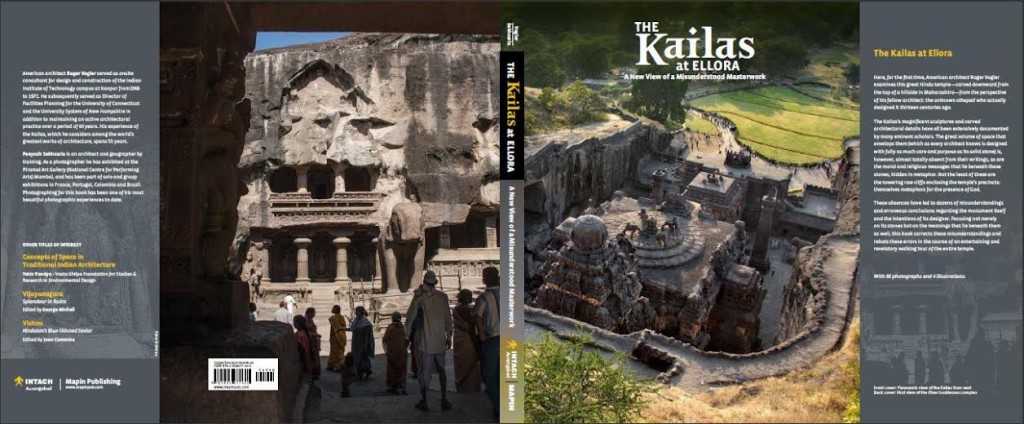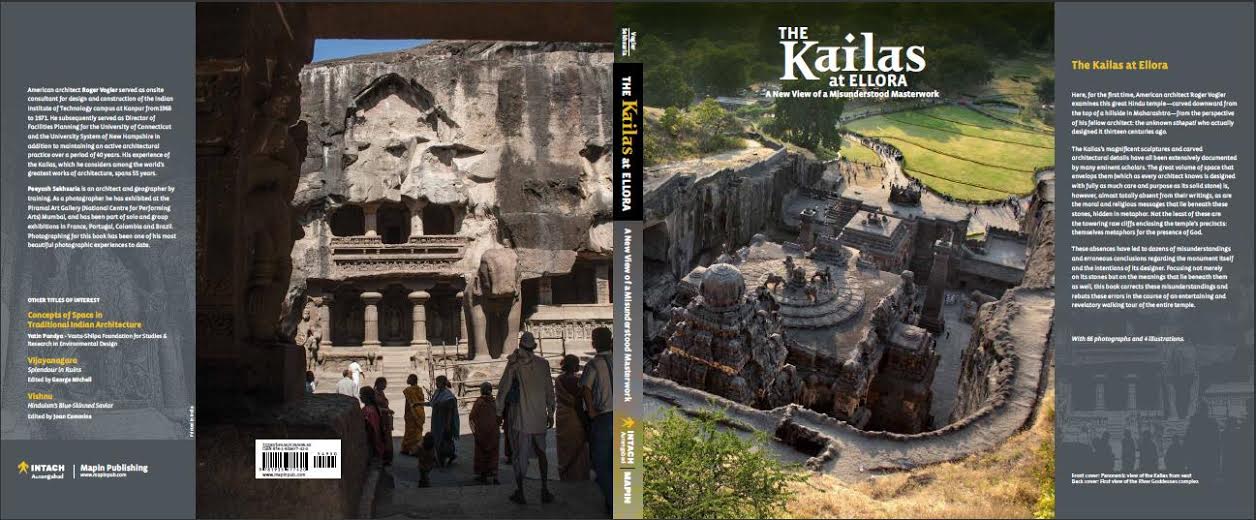The Kailas at Ellora: A New View of a Misunderstood Masterwork

Author: Roger Vogler
Photographs: Peeyush Sekhsaria and Roger Vogler
Published by Mapin and INTACH Aurangabad,
222 x 286 mm/ 8.75 x 11.25 in, Hardcover, 144 pages, 66 photographs and 4 illustrations
Retail Price: INR 2,250
American architect Roger Vogler examines this great Hindu temple—carved downward from the top of a hillside in Maharashtra—from the perspective of his fellow architect: the unknown sthapati who actually designed it 13 centuries ago.
The Kailas’s magnificent sculptures and carved architectural details have all been extensively documented by eminent scholars. The great volume of space that envelops them—designed, as every architect knows, with as much care and purpose as its solid stone—is, however, almost totally absent from these writings, as are the moral and religious messages that lie beneath the stones, hidden in metaphor. Not least of the absences are the towering raw cliffs enclosing the temple’s precincts: themselves metaphors for the presence of God.
This has led to misunderstandings and erroneous conclusions regarding the monument and the intentions of its designer. Focusing not merely on its stones but on the meanings that lie beneath them, this book corrects these misconceptions in the course of an entertaining and revelatory walking tour of the entire temple.
Roger Vogler served as onsite consultant for the design and construction of the Indian Institute of Technology campus at Kanpur from 1968 to 1971. He subsequently served as Director of Facilities Planning for the University of Connecticut and the University System of New Hampshire, in addition to maintaining an active architectural practice for over 40 years. His experience of the Kailas, which he considers among the world’s greatest works of architecture, spans 55 years.
Peeyush Sekhsaria is an architect and geographer by training. Photographing for this book has been one of his most beautiful photographic experiences till date.
The Book can be purchased at
http://www.mapinpub.in/bookinfo.php?id=227
http://goo.gl/UNStnv
http://goo.gl/p6jb7v








